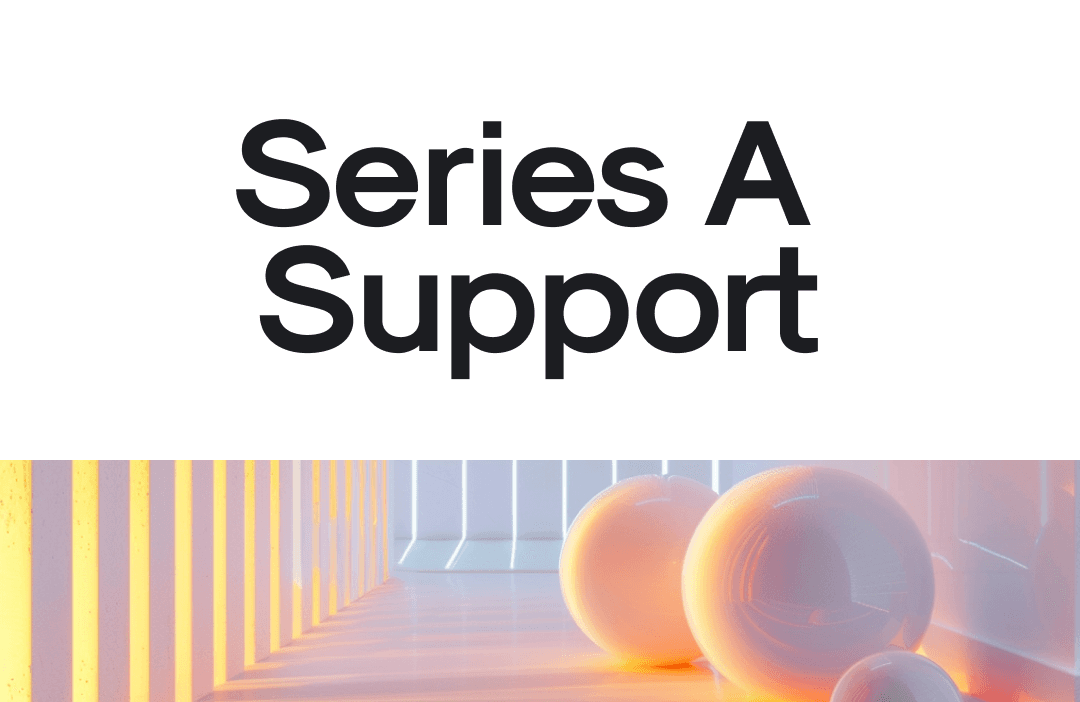The following is a guide on how to build out your customer support processes at Series A. It's made up of both Pylon's experience growing through this stage and the hundreds of customers we work with and have learned from.
This will be most helpful to you if you:
Are B2B
Sell software
Who to hire?
Most Seed-stage companies we encounter are still doing founder-led support (often led by the CTO). After raising the A, you'll want to bring on a customer-facing hire soon so that you can focus attention on other parts of the business. Note: you may be cautious about giving up founder-led support as it's a direct line into problems customers are facing. All founders feel this concern but don't worry. The right hire will help will make your life much easier, we promise.
There are two types of post-sales hires you'll want to bring on:
1/ Customer Success Manager (aka "CSM")
Your first Customer Success Manager is often a catch-all roles for any customer issues. Implied in their title, they do more than just reactive support. They'll also handle implementation and onboarding, educating customers about new releases, and handling upsells and renewals. Your customers will learn to know them by name.
2/ Product Support Specialist
Support hires are exclusively reactive. They will be working out of a support queue like Zendesk or Pylon to answer questions that come into a support inbox. You may also call this person a Support Engineer or Customer Engineer if you sell a technical product.
Most B2B startups will hire a CSM first.
If you're sales-led you should hire a CSM first in almost all cases.
If you're primarily self-serve and have a high volume of support issues, you should hire a more reactive support hire first.
What channels to offer support over?
There are many places where you might be offering support...
In-App Chat
Email Support
Slack Connect Channels
Microsoft Teams Channels
Slack or Discord Communities
Ticket Forms
WhatsApp
Phone Call
Telegram
Discord
You should aim to meet your customers where they are. If they use Slack, offer them a Shared Slack Channel. If your customers primarily use email, consider offering In-App Chat or Email support. Focus on what will create the best experience for your customers and then work backwards from there.
Most SaaS customer support teams we chat with offer shared Slack Channels to a large segment of their customers (or even all of them). At Pylon we have 850+ active shared Slack channels with customers and prospects, and for customers that don't use Slack, we offer Email and In-App Chat support.
Help Center
As your support volume grows, so will the number of common questions. Series A companies will often have either established Documentation and/or a Help Center (AKA Knowledge Base). Think of the Help Center as giant FAQ of commonly asked customer questions. Here's what ours looks like.
See the difference between Documentation and Help Center here.
You should start building a Help Center once you have 20+ support questions per day. At this point the volume is high enough that the time it takes to answer common questions is going to start becoming a nuisance.
Who should write Help Center articles? The best person to write them will always be the founder who has the most context, but unfortunately they will have too many competing priorities. Instead it should be owned by the first CSM or support hires.
Tooling
You should buy a support platform that will last you at least the next 1-2 years. Here's a checklist of what you should evaluate when searching:
All customer channels supported (In-App Chat, Email, Slack, ...)
Tight integration with Slack to loop in other team members on issues
Supports all needed integrations (Linear/Jira/Asana, Salesforce/HubSpot/Attio, Snowflake)
Workflows and automations for basic assignment rules, SLAs
Products we recommend you check out include:
Pylon (optimized for B2B)
Zendesk (incumbent solution, though increasingly outdated)
Intercom (optimized for B2C)
What will change at Series B?
Series B companies operate very differently and we'll soon have a guide up for how you should think about scaling at that phase. The larger you get, the more variance in setups. High level here are common changes we'll see:
You'll start to hire VPs (VP of Customer Success, VP of Support).
Metrics will start to matter a lot more. You'll want KPIs for First Response Time and Resolutions.
As you sell to larger customers, they'll often want more visibility into their actively open or closed tickets. This will prompt a need for a customer portal.
You'll start thinking about AI deflection to common support questions.
You'll want to export support data into a data warehouse to construct a customer 360 view.
Your customer success team's work will move from reactive to almost entirely proactive work.
Routing (via round-robin or time-based schedules) will become increasingly important.
Explore more
Get started today
We'll walk you through how you can get started and provide recommendations on how to scale your team and setup.




